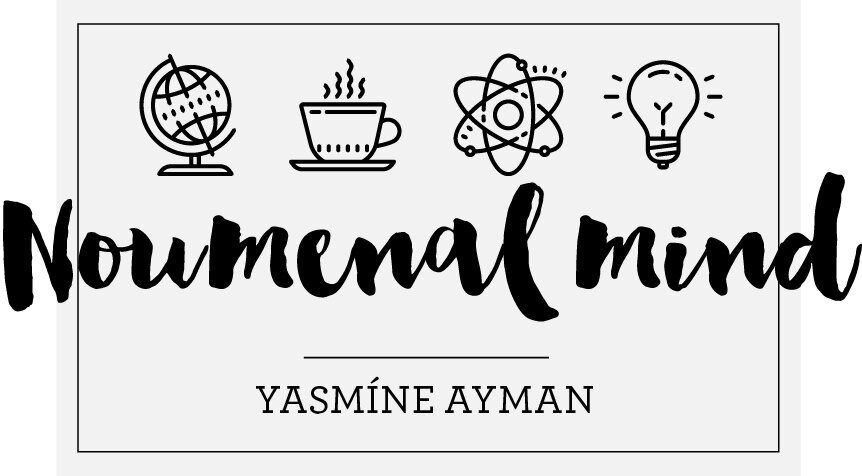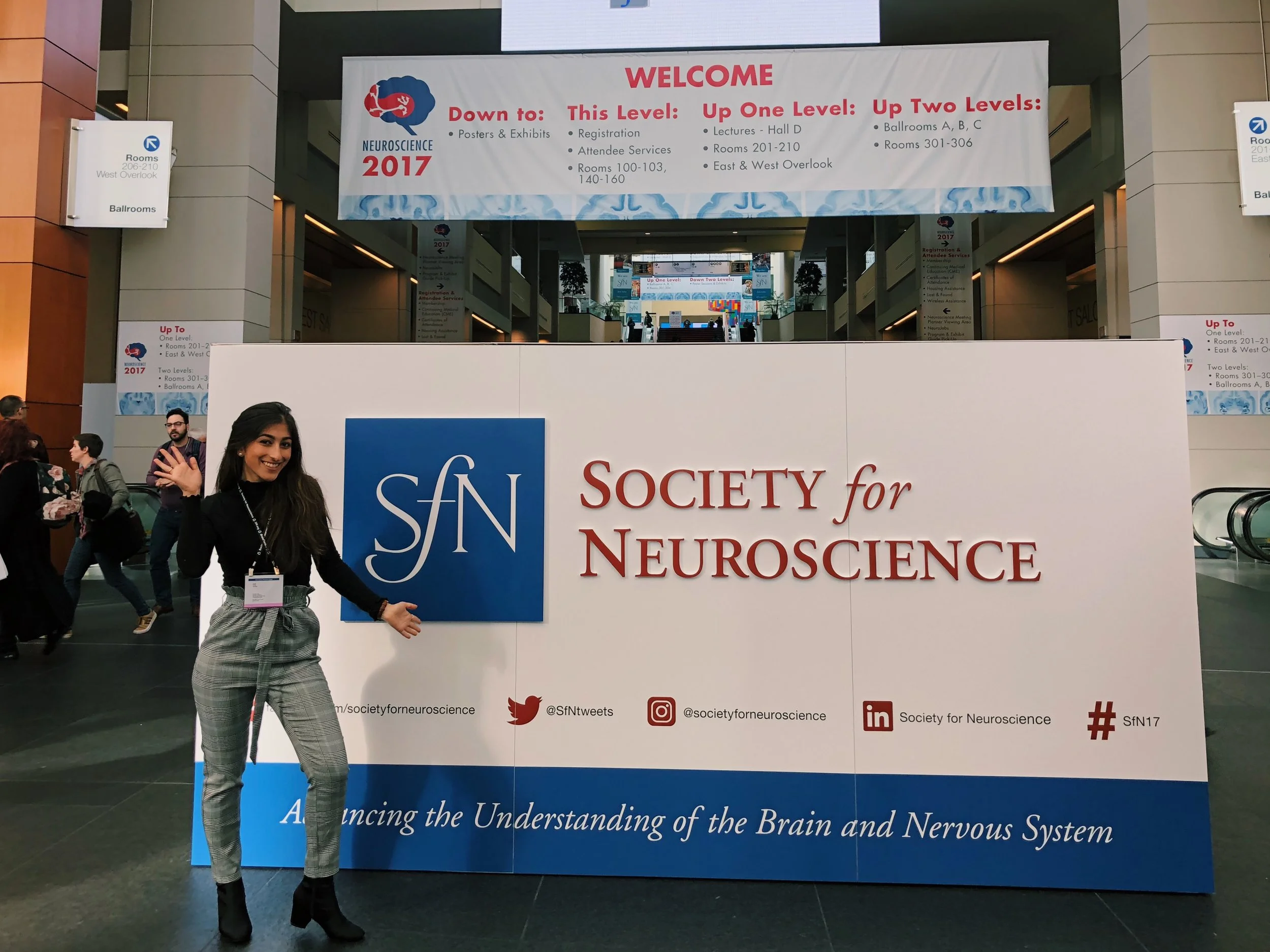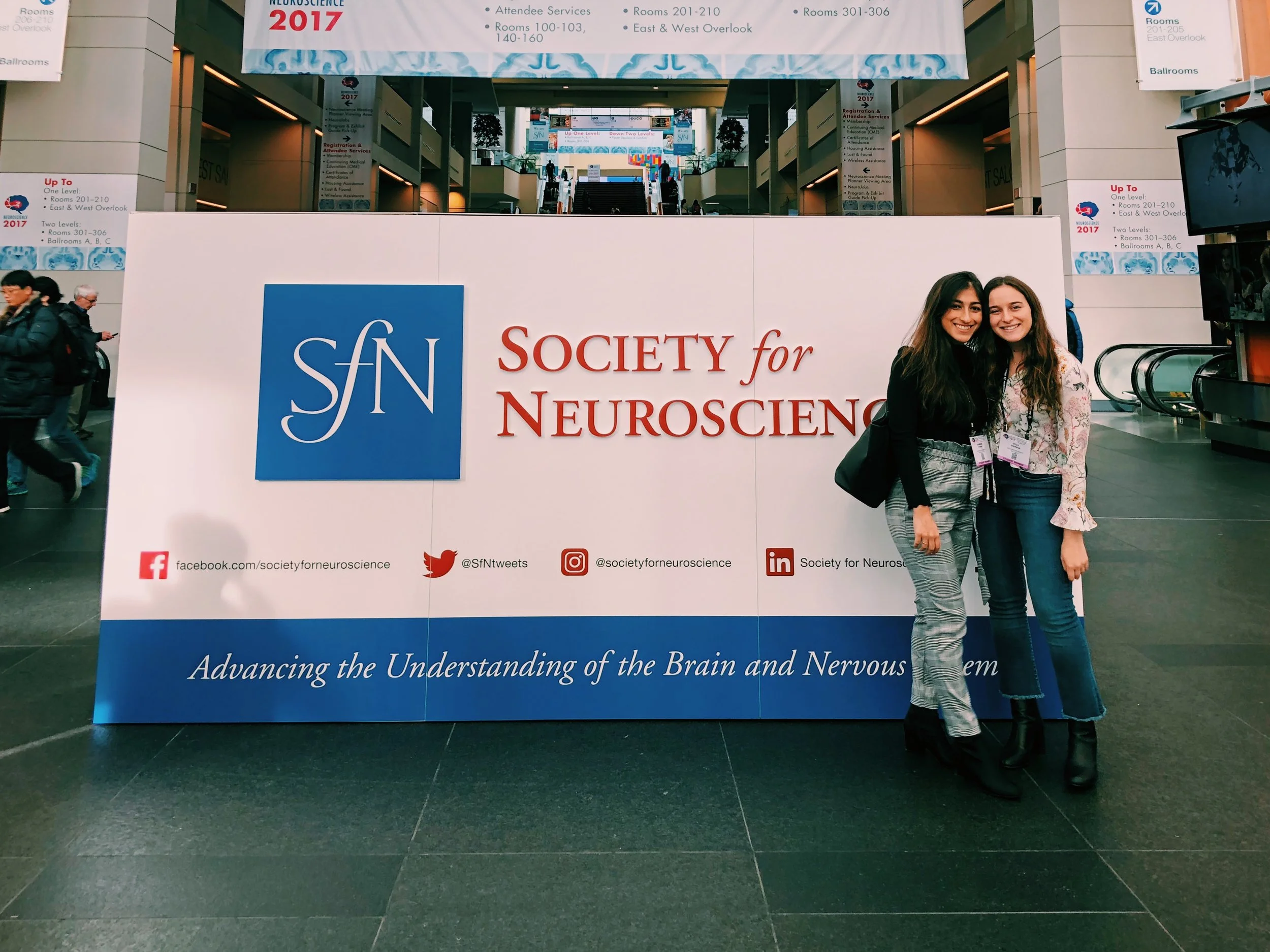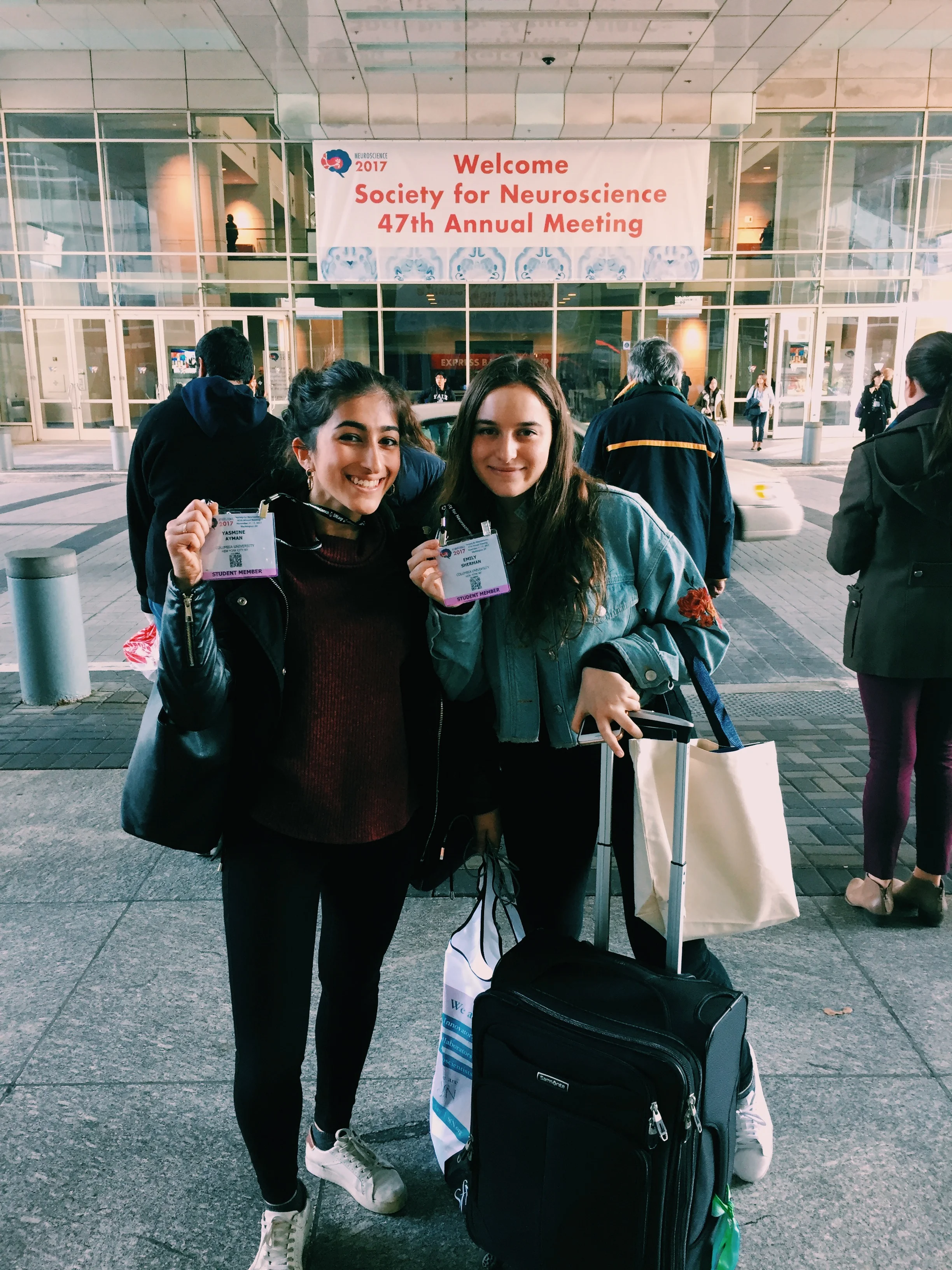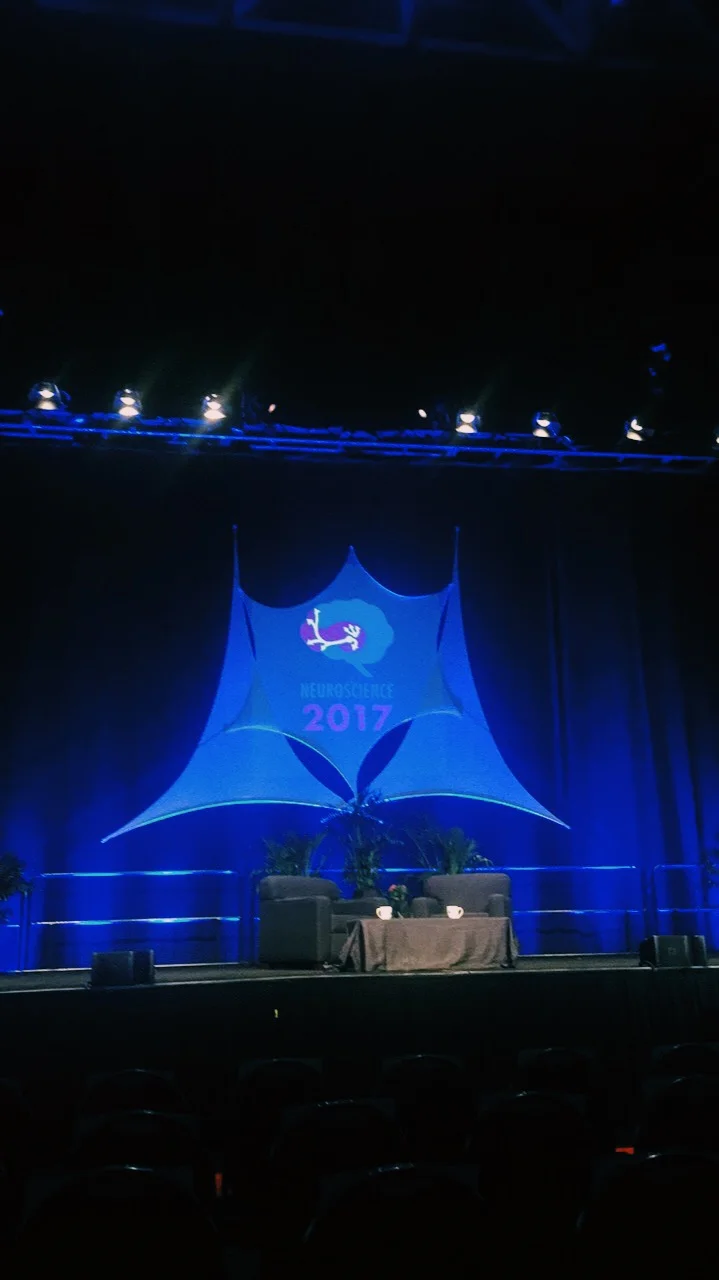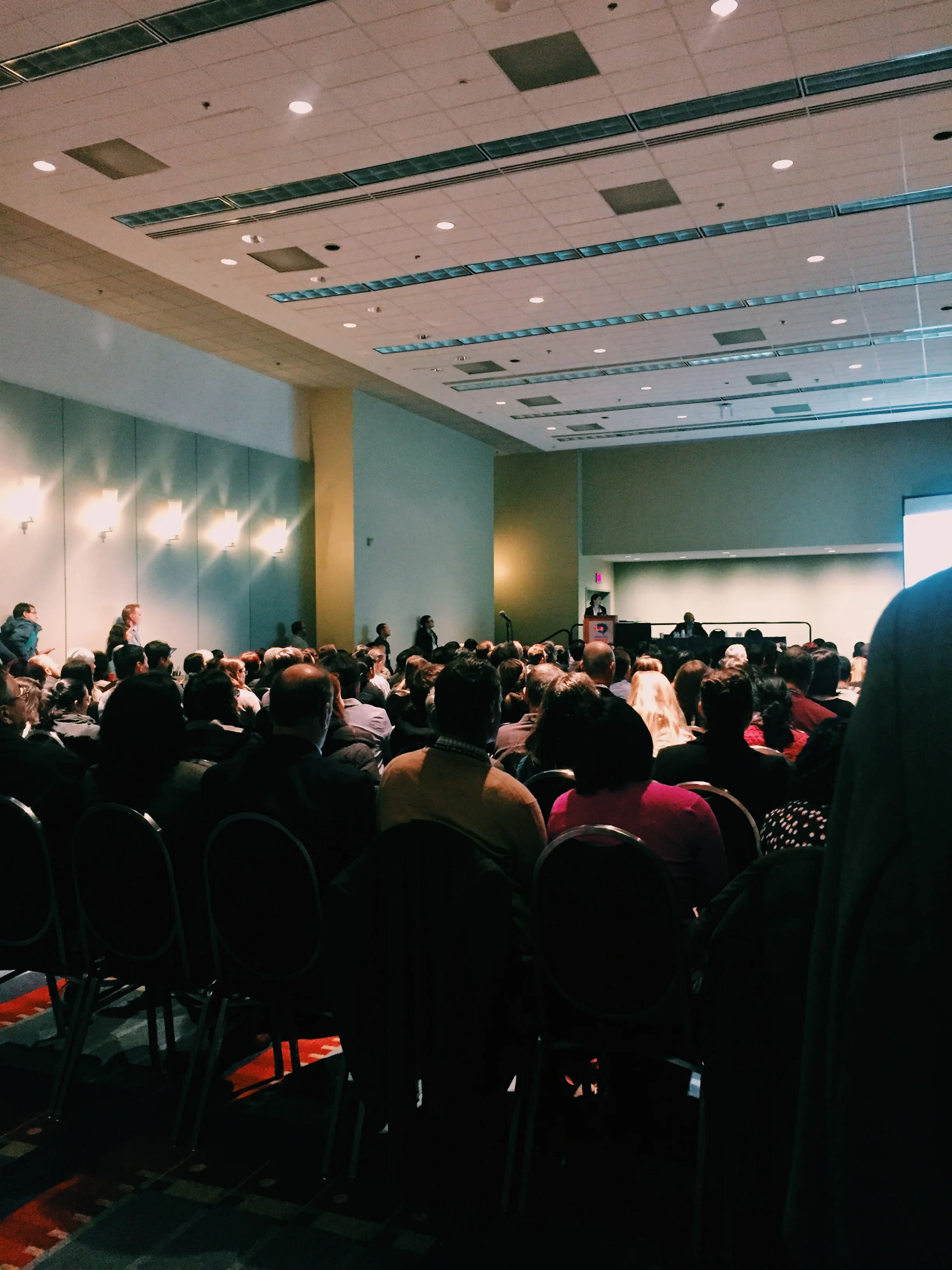Working in the Denny Lab and serving on the executive board of the Columbia Neuroscience Society (CNS) has opened so many doors for me this semester. I would say the greatest experience these two have afforded me is the Society for Neuroscience (SFN) annual conference, which was in Washington DC this year.
A few friends and I from CNS got on a bus Friday the 10th of November and made our way to the biggest neuroscience conference in the world, where we spent 3 days indulging in all things neuroscience. I was officially going as part of my lab, and I met up with my postdoc there.
Siddhartha Mukherjee gave the plenary speech the first day and imparted invaluable advice. He is an American oncologist and author of the bestselling book Emperor of Maladies, and thus is not a neuroscientist by training. He, however, gave a passionate speech about scientific research, and emphasised that you must “study the soils as well as the seeds”, which is what he has endeavored to do with oncology. What I understood from this is that we need to understand the complex biological pathways underlying diseases, but also the lenses through which we can analyse them and the wider implications they may have. He then concentrated on neuroscience, and established its two mandates: the desire to understand nature, and the desire to cure disease. My research aspirations fall under the second category. As a result neuroscience has a broader umbrella, whereas oncology has the luxury of a focus . The challenge of neuroscience is its broad scope, which may lead to less of a drive.
Furthermore, he emphasised the need for the collaboration of scientists across fields in dealing with, for example, problems like inflammation. Inflammation is thought to be involved in both cancer and Alzheimer’s disease and, shockingly, by the age of 60 he said that 10-12% of people with no ouvert disease will die due to inflammation. Clearly, it is a pressing issue that requires tackling from multiple angles, and this tackling requires a lucidity that neuroscience still struggles with (according to him).
Every morning there were events called Nano Symposiums, which were series of presentations on specific research realms in neuroscience. I attended one series on Alzheimer’s and one on IPSP cells. Although most of it was highly technical, I was able to follow particularly well in one presentation on how the activation of CA3 pyramidal neurons improves cognition in Alzheimer’s disease because it is closely linked with what the Denny lab does. The main thing I gained from these events was inspiration. Sitting there in the conference rooms and witnessing the presentation of rigorous science that is contributing to some of the biggest questions humanity faces was invigorating. My favourite part was the question and answers portion at the end of the Nano Symposiums. I witnessed intense and collaborative scientific dialogue in action when scientists would ask probing questions to the presenters and together reach a solution that I know was going to lead to a greater understanding in the scientific community as a whole.
In the afternoons we would go to the poster sessions, which were 4 hour sessions involving casual exchange of key scientific breakthroughs. It was nice to walk around and marvel at the exciting work people done, as well as the excited scientists presenting. I had marked the posters I wanted to see on the SFN app of some scientists I knew, and so for a few hours each day my friend and I would amble along the rows of research, absorbing it all in. I hope some day soon I will be standing there presenting my own work.
In the evenings there would be networking events and socials. The social that stuck with me the most was the Women in Science one. I had the opportunity to casually chat with leading female figures in the field of neuroscience about my future career aspirations and ambitions. Most of them were taken aback by my age, and it was at times difficult to be taken seriously as soon as I confessed that I was a freshman, but I guess that is the nature of networking events- you have to be of the age of earning the networks. Nevertheless, it was valuable for me to have exposure to the numerous professional avenues a neuroscientist can pursue for when I do seriously have to start thinking about it.
For 3 days I was walking around a huge convention centre with little purpose but to be around leaders in a field I feel so passionate about, and to start engaging in the discourse on the brain and the nervous system. Being involved in groundbreaking research back at Columbia made me feel like I belonged in the community, in the Society for Neuroscience, and I felt at home.

